Yerba Mate is a hot drink of yerba, ground up herbal tea leaves and stems, packed into a gourd and sipped through a metal straw. Everyone in Argentina was crazy about it! It’s not just a drink you pick from a menu at Starbucks, it’s a social tradition, a way of life, a ritual they enjoy at every gathering.
The Spanish word mate is pronounced as “MAH-tay,” and is sometimes written as maté in English to help us pronounce it better, although the accent is actually on the first syllable.
We had never seen or heard of mate before but found it to be a HUGE part of Argentina’s culture. It is at the center of every social event big or small. People drink mate in the morning and evening, they take it with them on their way to work, and even when they go for a walk in the park. It’s everywhere!
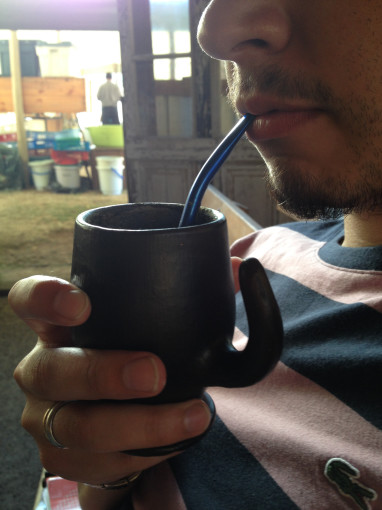
What is Mate?
Mate is a herb based drink (yerba) that is prepared by steeping dried tea herbs in hot water, sort of like tea. The herbs in the picture below show you how coarse it is. It looks like someone chopped up leaves and twigs with a knife. It’s high in caffeine and the Argentines drink it like Americans would drink coffee, but much more!
They pack a few spoonfuls of herbs in a small gourd, or wooden cup and drink it with a metal straw. The metal straws have a fine filter on the end so the herbs don’t get sucked up. There are many different types of gourds and people take great pride in what their gourd represents for them.
Unlike how most of the world drinks tea, they don’t steep the herbs once and throw them out. They keep refilling the gourd many times as they drink it, sometimes up to 15-20 times. Usually they only change the herbs once a day.
Click on the pictures if you want to try your own mate setup!
When do People Drink Mate?
Normally people drink mate with a large group of people, and pass one cup around for everyone to share. They also drink it by themselves, as people would drink coffee. We were with our friends in San Martín de Los Andes and stopped in to just say hi to a lady, who of course invited us in for mate. Mate is offered out of respect, and not accepting it can be seen as bad manners or even rude.
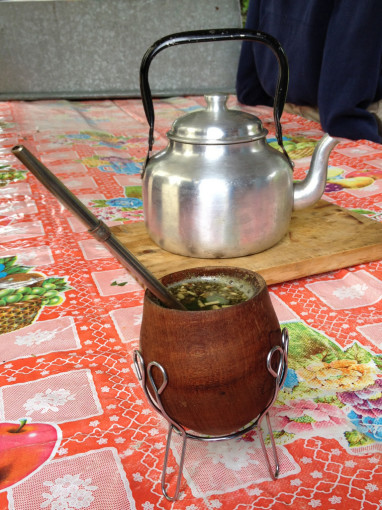
From what we learned, the preparer (host) boils the water and then prepares the mate cup. The hot water pot is at the ready so the cup can be refilled. The host takes the first sip because apparently it is considered rude to not try it first before giving it to your guests. Once the preparer is satisfied, they pass the gourd to the person to their right – also tradition.
The first person drinks all or most of what is in the gourd, about 5-10 sips of mate, and passes it back to the preparer. The preparer adds more hot water and sugar (because it’s a little bitter), and gives it to the next person. The same gourd and straw are used by everyone in the group. There’s no worry of getting germs, cooties, or the flu from the group either. I suppose someone who is sick doesn’t join-in out of respect for the others. It continues around in the circle the whole time they are talking or hanging out.
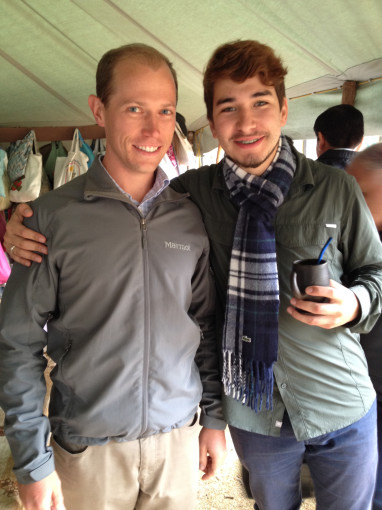
The gourds are usually small, so when the preparer fills it with the mate yerba there are usually only a few sips in it. They don’t have huge coffee cups like we Americans are keen on.
Drinking Mate Away From Home
When locals are traveling around in bus or car, or are away from home, they will bring the fixin’s for mate with them. They bring a thermos of hot water along with a little tin of herbs, and of course their gourd and straw. There are special containers with screw-on lids that hold the herbs on the bottom and sugar on top.
It is a lot of equipment, so they put it all in a tall, slender leather bag, kind of like an over-sized binoculars case. The bags have a shoulder strap and most everyone walks around carrying one. It seems the locals never leave the house without their mate! On our road trip, we used the lid of the mate carrier for our dice! There is more than just one use!
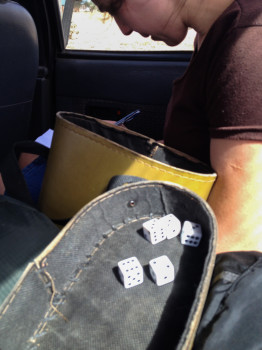
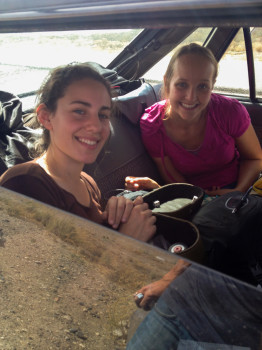
Tereré – Cold Mate with Juice
There is another type of mate that the locals prepare when they want mate but don’t want a hot drink. It would be like what we call an “iced coffee.” They prepare orange juice, well actually the Argentina brand of orange Tang, and put that in their Thermos. They prepare it the same as hot mate, but with juice. The result is a bitter sweet drink that is quite enjoyable. My wife really enjoyed the cold mate we had on our long road trip!
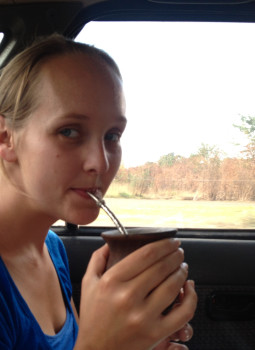
Why Argentines Drink Mate?
Most locals believe that the mate has lots of caffeine and is great in nutritional value. They say it is good for enhancing your ability to focus, helps with digestion, weight control, physical endurance, cardiovascular health, and is rich in antioxidants. So you can see why the locals are convinced that they are helping their bodies by drinking it. It is a really natural drink so I’m sure it has some health benefits!
It was so fun to learn about this cultural tradition and get to be a part of a few “mate rounds” with some locals. It is really fun to try and understand the process, even though it might seem a bit excessive. It’s incredible to see their loyalty to the tradition and the exuberance the people have explaining the tradition to others who don’t know. It really is a fun experience!
Have you ever tried drinking mate? Leave a comment below! Click here if you want to give it a try!


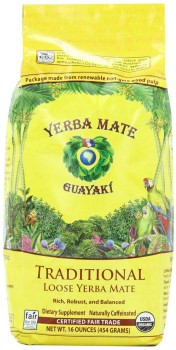
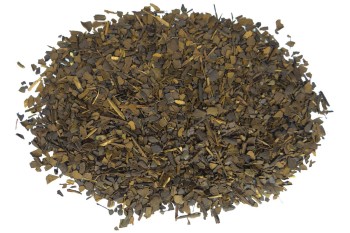
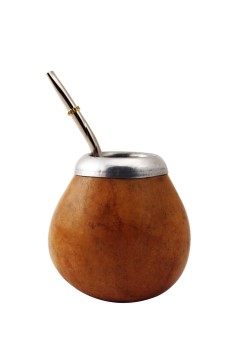





Good day! I could have sworn I’ve been to this site before but after going through some of the posts I realized it’s new to me. Regardless, I’m definitely delighted I came across it and I’ll be book-marking it and checking back often!
whoah this blog is great i really like reading your posts.
Keep up the great work! You recognize, a lot of people are hunting round for this information, you can aid them greatly.
I’ve never tried mate tea before until my visit to Argentina last year. It was my first trip to Argentina and I saw people drinks mate tea using a straw, that’s very interesting from my point of view. I like the culture of drinking mate tea and I drink it regularly even I’m far away from Argentina now.
Pingback: 14 Days in Patagonia: The Ultimate Explorer’s Itinerary – Travelling, Rent, Hotels
Pingback: 14 Days in Patagonia: The Ultimate Explorer’s Itinerary – Escape Holidays